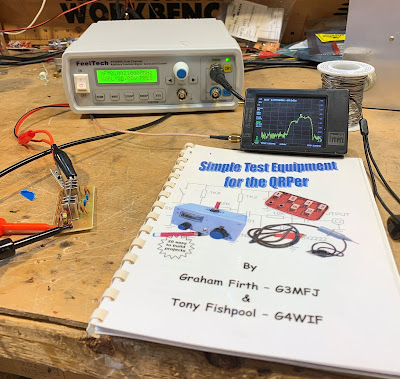Yesterday I went through my novice logs from 1973-1974. I was in Congers, NY and my call was WN2QHL. Please take a look at the callsigns from my log and let me know if we had a contact. I will then let you have more details from my log.
Novice Contacts 1973-1974 from WN2QHL
WN2NEC
WN2RTH
WA4DCL
WN4CBB
WN9LLX
WN1RWX
WN4ETR
WB2CSO
WN8QHM
WN8ONA
WN4KID
WN8PMF
WN2INN
WN2ECU
WN4DSO
WN3UCL
WN4KBL
WB4WDQ
WN0IHH
WN9MNW
WN8ODW
WA8VCH
VE1BAD
WN8NIJ
WN8MYJ
WA3TKP
WN2GMQ
WN8LDI
WN5JZP
WN5JXZ
WN2PNQ
WN2HKY
WB2PPP
WN4EIS
WN4DNV
WA8WIK
WN3TPJ
WN1RRR WN1RPR?
W2MJR
WN2SHL
WN3TZR
W1DUQ
WN2ROW
WN2SLA
WA3HNZ
WN2JXT
W2HAG
WA2CDE
WN8ORL
WN4FYL
WN1PXM
WN2FPQ
WN4ZFF/3
WN3VDU
WN8QPJ/8
WN3TBW
WN4BWT/4 OR BWJ
W9MZO/9
WN1SLG
WN0KTR
W9KCT
WN3VKH
K1BXZ
W1AW
WA2QNX
K2BBU
K1BXZ
WN2ROZ
W1TRS
VE3FMF
WN3UPO
K1OOL
WN2RNJ
WN2KWK
WA2CDE
WN2JDE
WN3UQO
WN2IZY
W3CNN
WN2NNA
WB2EVS
VE2AJQ
WN1SBE
WN4ZIN
WA2JXM
WA3TVE/3 OR JVE
OR UE
WASQWF
WA3JRU
W3ABT
WA2IWX
WN3FLK
WN1RZW
WN3TBW
WB2PYM
WN1RXM
WN2ERU
WB8HHN
WN2LVV
WB8JBM/8
WN2TEO
K4LDR
WN2EHE
K8MFO
WN2NAE
W3IN
WN3SZX
WA1EOT
W2MUM
WA2UOO
WB2RKK
W4KFL
WN2NEC
WN4EJJ
WN1SCL
WN2NQL
WA1RXJ
WA2YAS
WN2QHN
WN8POK
WB2ABJ
WN1QKD
WN2SDO
WN1SRT
WN2KOH
WN8DOB
WN1SQM
WN2SXT
W2HN
WA1RFF
WN2VNA
WN1RME
WB4YNY
WB8ALE
WN4AQM
WN4DMO
WN3USU
WN8NXE
W2HAG
WA1KLB
WB2NDL
WN2JXG
WN1RIP
WN2LKN
WA3IYA
WB9LJS
WN2RPL
K1BOM
WN4GOC
WN8QGO
WN8OPB
WN8OOE
WN2SAM
WN4FXN
WB2SXD/2
WN2IQM
WN3VUU OR UUU?
WN8PGD
WN8PIU
WN8OGY
WN8OWD
WN8OHP
WN9JOI
WN2GMQ
WN3VUR UR UUR
WN2LOC
WN2SAM
WN2TJQ
WA43PM
WA4YDR
WN9LDS OR LOS
WN9LSR
WN3UDR
WN1RGU
WA1RYL
WN2LBO
WN1RIM
WN2TAG
WN2TLQ
WN8ODP
WN2TBB OR JBB
WN4CRZ First QSO with DX-100
WN4HKG
WA6TLH/HK6 FIRST DX 40 METERS
Feb 23 1974
WN2JHP
WN2TAS OR JAS
WN8QXR
W4DRJ
WN4GBX
WN4DAQ
WB8KUQ
WN4BPN
WN2SAM
WN8OVW
VE3GXX
WN0JOZ
WN6CPQ
WA4CNL
WN0LLT
WN0KUU OR KVU OR
KUV
WN8QIN
WN4HLQ
K0IEU
WA1DWL
WN4GUF
VE1IC
WN4FOM
K2AVX
WA9AKY
VE2DJB
WN4EDQ
WN8PLH
WN2TPD
WN1SZS
WN4HRC
WA0WTV
VE3HEF
WN3UOO
K2IY
W4AHN
WN8OIF
WN9NYO
VE3AFX
K1PNB
K5EQX
WB6ALD
WB6LUS
WN0LQE
WA1POJ
WA5RFT
WN8NYU OR V
WN4GUF
K1BXZ
WN5GTE
WB5GDN
WB5GEN
WN2TJQ
WN2JXT
WN4CQX
WA1ASU/1
WN2IOJ
WN4GMY
WN2RUZ
WB8PRJ
WN4BTL
WB8MOI
VE3AGY
W8JEI
WN3VUZ
WA2CME
WN5KYK
WA1JUY
WN2NIL
K3DHD/9
WN4CTJ OR CWJ OR
WUJ OR CVJ Gadsden AL.
WP4DRE/5
WN2GMQ
WN1SIP
WN9MOS
WN9OCO
WN2UAC
WN8NPY
WB5DIZ
WN2JHD
WN2RYH
WN2RXL
WB8OFU
WN8RTU
WN8MTW
WN8PIY
WA8JPC
K1OOL
WB2MYV
WN4CNE
WN4DXW
WN2PHE
WN8MYJ
WM2TTQ
WN4AYX
WN4ECB
WNOJGT
W4UHF
WN4FPU
WN8QCV OR U
WN8PCV
WN2STZ
WN2KLX
WN2FUN
WN2SLF
WN8RTZ/9
WN9MLY
WA7SCG
KP4USN
WN2UMV
WA6ARG
WA4BPS
WN9MAO
WN5HRI OR 4
WN2PWM
KZ5VV
ZL2ACP
WA6UUR OR VVR JACK
IN Pasadena
KN5KSX
YU1NFT
YU2QZE
WA7STW
WN8RIK/4
WN2UMU
WN2PNQ
WN2QCE
YU2QZ
WN2TJQ



























